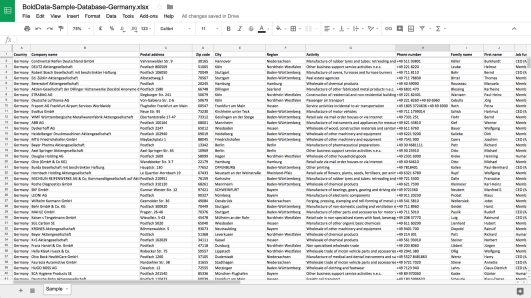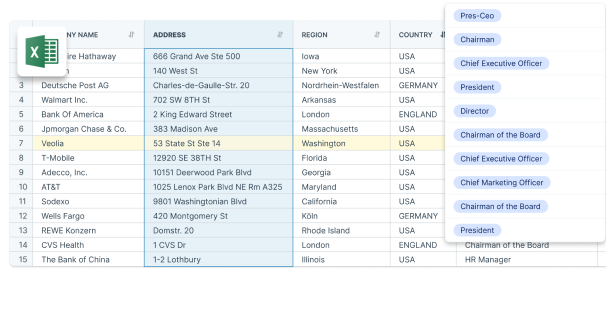Organisation structure refers to the formal system of authority, communication, roles, and responsibilities within a company or any other type of organisation. It defines how different departments, teams, and individuals are aligned and how they interact and work together to achieve the organisation’s goals.
Importance of organisation structures in company data
In company databases organisation structures are important to see ownership of companies worldwide. This is important because you avoid contacting a company which might already be a client (from a different entity within an organisation group). It will also help your company with due diligence and KYC. BoldData has built organisation structures on all 300+ million companies. Our organisation database contains hard-to-get information about corporate structures, chains, groups and beneficial ownership.
The Purpose of Organisation Structure
The main purpose of an organisational structure is to provide a clear hierarchy of authority and responsibility, which helps to ensure that tasks are completed efficiently and effectively. A well-designed system also helps to ensure clear lines of communication, which is crucial for the success of any organisation.
Different Types of Organisation Structure
There are several organisational structures, each with its strengths and weaknesses. The most common styles include:
Hierarchical Structure
The hierarchical structure is a traditional model in which authority is passed down from the organisation’s top to the bottom. This structure is common in large corporations, where decisions are made by top executives and then passed down to lower-level managers and employees.
Matrix Structure
The matrix structure is a hybrid model combining functional and project structure elements. In this type of structure, employees report to an operational manager and a project manager, depending on the specific task they are working on.
Flat Structure
The flat structure is a less hierarchical model in which authority and decision-making power are distributed more evenly throughout the organisation. This structure is often used in small companies, where employees are given more responsibility and autonomy.
Organisational Structure Types and Their Advantages and Disadvantages
Each type of organisation structure has its advantages and disadvantages, and the right structure for an organisation will depend on its specific needs and goals.
Hierarchical Structure Advantages
- Clear lines of authority and responsibility
- Efficient decision-making processes
- Strong central control
Hierarchical Structure Disadvantages
- Lack of flexibility and responsiveness
- Organisational communication is poor at all levels
- Limited opportunities for employee input and innovation
Matrix Structure Advantages
- Improved flexibility and responsiveness
- Better integration of functional and project-based work
- Strong collaboration between departments
Matrix Structure Disadvantages
- Conflicts between functional and project managers
- Increased complexity and confusion
- Potential for employees to feel stretched thin and overworked
Flat Structure Advantages
- Improved communication and collaboration
- Greater autonomy and empowerment for employees
- Faster decision-making processes
Flat Structure Disadvantages
- Difficulty in coordinating large-scale projects
- Authority and responsibility lines are unclear
- Potential for decision-making to become bogged down by group consensus
In conclusion, the organisation structure is a crucial aspect of any organisation. It determines how tasks are completed, who is responsible for making decisions, and how different departments and individuals interact and work together. There are several different types of organisation structures, each with its advantages and disadvantages, and the right system for an organisation will depend on its specific needs and goals.
BoldData Can Provide You With Diverse Organisation Structure Data
With BoldData, businesses all over the world are at your fingertips. BoldData provides a customised file with all companies in any country of the highest quality. From top-notch companies to small businesses, we have the organisation structure data you can utilise for your campaigns!

